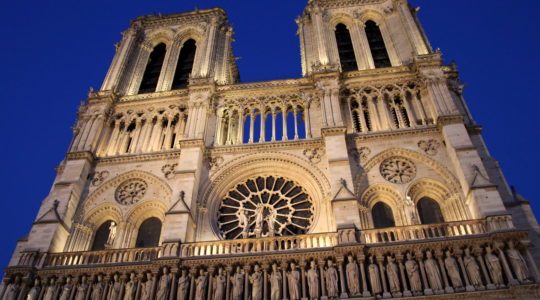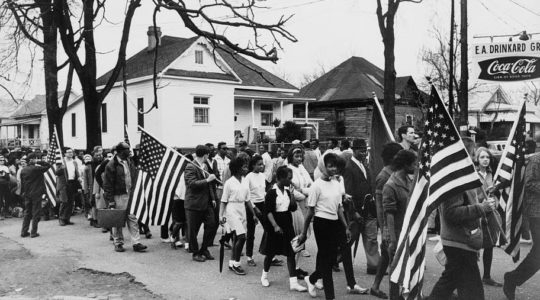One of the few memorials to the six million victims of the Nazis on public property in the United States is scheduled to be built in a public park in San Francisco and it will consist of George Segal’s sculpture, “The Holocaust,” currently on display in the Jewish Museum in Manhattan.
William Lowenberg, one of the three co-chairman of San Francisco’s Mayor Diane Feinstein’s Committee for a Memorial to the Six Million Victims of the Holocaust, told the Jewish Telegraphic Agency in a telephone interview that the committee had examined a number of entries offered in response to committee letters, asking for proposals for a memorial.
He said the memorial committee decided, on the basis of sketches Segal submitted, that he should be chosen to prepare the finished work for the memorial in San Francisco.
Segal began work on the sculpture by searching out photographs he remembered seeing in 1945, just after the Allies liberated the Nazi death camps. His sculpture shows seven men, two women and a boy, either naked or in undergarments, who have been taken out of the gas chambers and tossed in a heap. Segal said he chose deliberately to make the figures appear hollow and disembodied, as much souls as human beings.
Somber viewers who have crowded the Jewish Museum to see “The Holocaust” have noted that Segal tried to indicate religious and allegorical motifs. The figure, critics agree, that pulls the composition together is a standing figure in the foreground, holding himself upright by grasping one of the barbed wires which surround the sculpture. He is dressed in the striped prison pajamas the Nazis gave their victims.
As with Segal’s previous works, the plaster figures in “The Holocaust” were made by taking molds from people and by making plaster casts which Segal remolded into final form after the living models emerged from the still-soft plaster. Segal said the man who modeled for the standing figure was a real survivor, “an Israeli friend who survived the camps.”
WILL OVERLOOK THE GOLDEN GATE
Lowenberg, himself a survivor, told the JTA that the Segal sculpture will be the totality of the memorial which will be located in Lincoln Park, overlooking the Golden Gate. The park now holds an unrelated museum, the California Palace of the Legion of Honor.
The land on which “The Holocaust” will be placed was donated to the memorial committee by the Park and Recreation Commission of the City and County of San Francisco, Lowenberg said.
He estimated the total cost of the memorial project, which will be the only memorial to the Six Million on public land in San Francisco, at $750,000. He said a major part of that sum will be for payment for the sculpture and its preparation for permanent exhibition. The rest will be used for a permanent fund to finance the teaching of the Holocaust in the city’s public and private schools.
Lowenberg said the memorial, which will be cast in bronze for permanent display, will be in place for dedication ceremonies in November but that the precise date and content of the dedication ceremonies remain to be fixed. Asked whether the Segal sculpture will be easily accessible to residents and visitors, Lowenberg replied that the Lincoln Park is a “must” on city-sponsored tours.
Asked whether the memorial committee, a city-wide group of Jews and non-Jews, including a number of survivors, had any concern that the sculpture, which will not be protected by any kind of a fence, might be the targets of vandalistic attacks, Lowenberg replied, “We thought about it and discussed it many times and we finally decided to take a chance that those seeing it would have enough respect not to abuse it.”
JTA has documented Jewish history in real-time for over a century. Keep our journalism strong by joining us in supporting independent, award-winning reporting.
The Archive of the Jewish Telegraphic Agency includes articles published from 1923 to 2008. Archive stories reflect the journalistic standards and practices of the time they were published.



